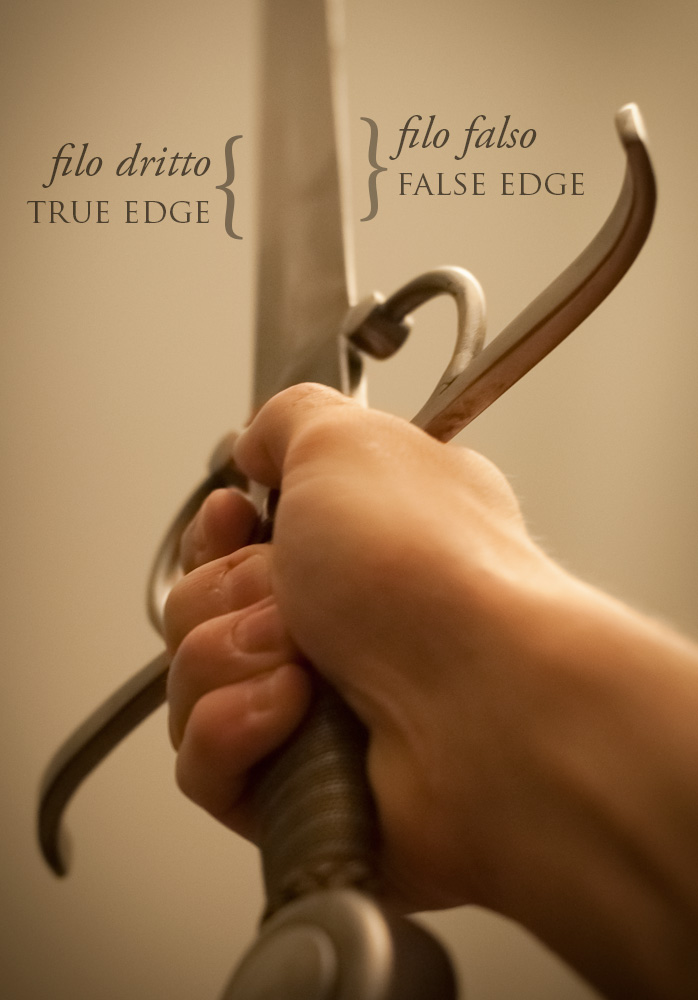Some years ago it might not have been so, but today I think this post is redundant in its bare essentials. I believe for most of you, regardless of how much you know about Bolognese swordsmanship specifically, the terms true edge and false edge are familiar. Regardless of the collective knowledge of the community being far ahead such basics, even many of the original masters began by explaining this concept. And of course, there will always be those completely new to Historical European Martial Arts reading this, in which case this will be the perfect place to start. For others, consider this recap, or maybe just a new perspective, on a familiar topic.

The Bolognese sword has two edges. When you hold the sword in your hand, the edge facing forwards is the true edge or the “true edge”. The edge facing toward you is the filo falso or the “false edge”.
In a sword meant for use in combat or the duel, both edges are sharp and capable of wounding. They still have different primary roles: most attacks and offensive strikes are done with the true edge, while the false edge performs ascending diagonal parries. Conveniently, these parries are named falsi.
Beside parrying, all cuts can in theory be done with the false edge, but the most fundamental ones are the rising cuts from below aimed at the hands or arms of the opponent.
The parries done with the true edge are stronger and are done with the half of the blade closer to the crossguard. They are followed by either cuts or thrusts as ripostes. The parries done with the false edge generally rely more on speed in beating the opponent’s sword and are done closer to the point of the sword than the true edge parries. Parries done with the false edge are easier followed by a cut than a thrust, but this is no fixed rule.
If the swords remain crossed, they can do so either false edge to false edge (falso con falso) or true edge to true edge (dritto con dritto). They can also be crossed true edge against false edge, but in this case the fencer with true edge above the opponent’s false edge will have an advantage. The equal strette di mezza spada are where speed, cunning and skill offer the advantage instead of structural disparity.
As we see, the cuts, the parries and the crossing at half-sword all require understanding the edges of the sword. This is a simple lesson in itself, but it will be of great value to us when we take a closer look at the various strikes in the system. But before that, in the upcoming posts we will discuss the guards and then have a quick revisit on footwork, though it has already been discussed.